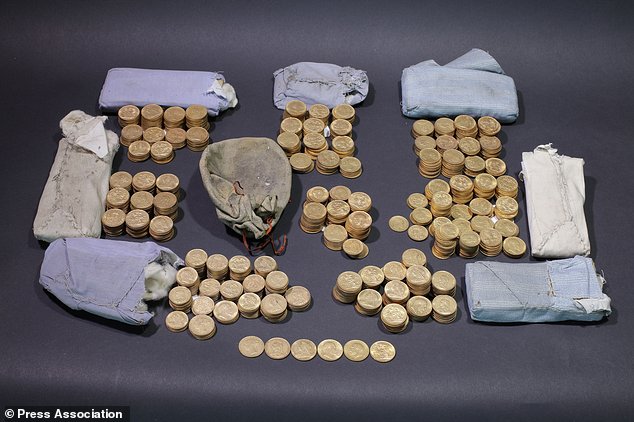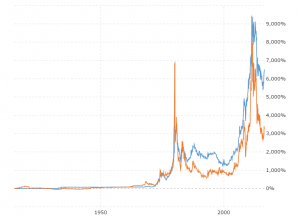Mystery Gold Hoard found in Piano
Coin collectors will go to considerable lengths to protect their collection, especially if it is bullion and precious metals. A recent story from Great Britain shows just how far one collector – identity unknown – went to protect his or hers. Sadly, whatever the intention, the outcome was almost certainly not what the collector had in mind.

Undated handout photo issued by The Trustees of the British Museum of a hoard of century-old gold coins found hidden in an upright piano, as a treasure inquest is being held in Shropshire to determine what should happen to it. PRESS ASSOCIATION Photo. Issue date: Thursday April 20, 2017. See PA story INQUEST Piano. Photo credit should read: Peter Reavill/The Trustees of the British Museum/PA Wire
NOTE TO EDITORS: This handout photo may only be used in for editorial reporting purposes for the contemporaneous illustration of events, things or the people in the image or facts mentioned in the caption. Reuse of the picture may require further permission from the copyright holder.
Back in 1983, Graham and Meg Hemmings, a couple who were living at the time near the small town of Saffron Walden, about 40 miles north-east of London, bought an old piano locally. They wanted their four children to have to opportunity to learn to play, but when they moved to a new house, the piano went into storage, and was still there when the children left home. In 2016, they donated it to a local community college, who had put out a call for instruments, and the college called in a piano tuner to put it into good order. When he found the keys sluggish, he started to take them out to fix the problem, and it was then that the tuner, Michael Backhouse, found mysterious packages of white cloth tailor-made to fit beneath them. When he removed one of the packages and opened it, gold coins tumbled out!
A Hoard is Discovered
There were seven packages and a leather purse, containing in total 633 full sovereigns and 280 half sovereigns, all dated between 1847 and 1915. All of them were minted during the reigns of Queen Victoria, Edward VII and George V. They were all 91.7% pure gold, and weighted in total around 13 pounds. The current value has been provisionally estimated at around $400,000.
The college put them in their safe, and notified the authorities. The local Coroner’s Court was given the job of sorting it all out. The relevant law was the British 1996 Treasure Act, a law designed to give fair returns to treasure hunters. The coroner may declare the find ‘treasure’, and that is what he did in this case. That meant the hoard had to be offered to a museum for fair value, and the payment would be made to the finder and the owner of the property or land it was found on. Only if it was not bought by a museum could the finder keep it. A three-month period was given for claimants to come forward, but no valid claims were made. The piano tuner and the college, as the legal owner when the treasure was found, will share the proceeds of the sale to the British Museum. The owners of the piano will receive nothing.
Hidden in the Depression Era
The piano is a common model, made in the thousands around 1900 by a company called Broadwood and Sons of London. When the hoard was being examined, a piece of carboard with a cereal advertisement on it allowed the Museum to estimate that it was placed in the piano between 1926 and 1946, most likely during the years of the Great Depression.
The take-away for coin collectors is to ensure, especially if you plan to leave your collection to descendants, that it is secure in a place known to others. Otherwise, it may share the fate of this one – to lie hidden for almost a century, to benefit only a random future finder.









